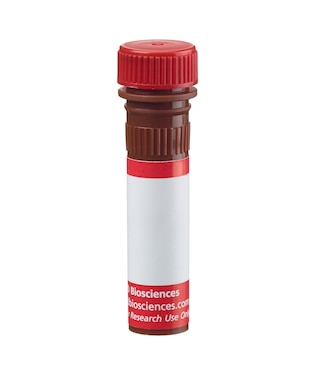-
Reagents
- Flow Cytometry Reagents
-
Western Blotting and Molecular Reagents
- Immunoassay Reagents
-
Single-Cell Multiomics Reagents
- BD® OMICS-Guard Sample Preservation Buffer
- BD® AbSeq Assay
- BD® OMICS-One Immune Profiler Protein Panel
- BD® Single-Cell Multiplexing Kit
- BD Rhapsody™ ATAC-Seq Assays
- BD Rhapsody™ Whole Transcriptome Analysis (WTA) Amplification Kit
- BD Rhapsody™ TCR/BCR Next Multiomic Assays
- BD Rhapsody™ Targeted mRNA Kits
- BD Rhapsody™ Accessory Kits
-
Functional Assays
-
Microscopy and Imaging Reagents
-
Cell Preparation and Separation Reagents
-
- BD® OMICS-Guard Sample Preservation Buffer
- BD® AbSeq Assay
- BD® OMICS-One Immune Profiler Protein Panel
- BD® Single-Cell Multiplexing Kit
- BD Rhapsody™ ATAC-Seq Assays
- BD Rhapsody™ Whole Transcriptome Analysis (WTA) Amplification Kit
- BD Rhapsody™ TCR/BCR Next Multiomic Assays
- BD Rhapsody™ Targeted mRNA Kits
- BD Rhapsody™ Accessory Kits
- United States (English)
-
Change country/language
Old Browser
This page has been recently translated and is available in French now.
Looks like you're visiting us from {countryName}.
Would you like to stay on the current country site or be switched to your country?




Immunohistofluorescent analysis of CD3 expression by cells within B56BL/6 mouse spleen (left panel). A mouse spleen cryosection (5 µm) was fixed with BD Cytofix™ Fixation Buffer (Cat. No. 554655), blocked with 5% goat serum and 1% BSA diluted in 1x PBS, and stained with Alexa Fluor® 647 Rat Anti-Mouse CD3 Molecular Complex antibody (Cat. No. 557869, pseudo-colored green), BD Horizon™ BV421 Rat Anti-Mouse CD11b antibody (Cat. No. 562605, pseudo-colored red), and Alexa Fluor® 488 Rat Anti-Mouse CD45R/B220 antibody (Cat. No. 557669, pseudo-colored blue). Images were captured on a standard epifluorescence microscope. Original magnification, 20x. CD3 expression in spleen and thymus (middle and right panel). CD57BL/6 splenocytes were simultaneously stained with Alexa Fluor® 647 mAb 17A2 (Cat. No. 557869) and PE rat anti-mouse CD19 mAb 1D3 (Cat. No. 557399, middle panel). C57BL/6 thymocytes were stained with either Alexa Fluor® 647-conjugated mAb 17A2 (Cat. No. 557869, right panel, filled histogram) or Alexa Fluor® 647-conjugated rat IgG2b, κ isotype control mAb A95-1 (Cat. No. 557691) (right panel, empty histogram). Flow cytometry was performed on a BD FACSCalibur™ flow cytometry system.


BD Pharmingen™ Alexa Fluor® 647 Rat Anti-Mouse CD3 Molecular Complex

Regulatory Status Legend
Any use of products other than the permitted use without the express written authorization of Becton, Dickinson and Company is strictly prohibited.
Preparation And Storage
Product Notices
- Since applications vary, each investigator should titrate the reagent to obtain optimal results.
- An isotype control should be used at the same concentration as the antibody of interest.
- Caution: Sodium azide yields highly toxic hydrazoic acid under acidic conditions. Dilute azide compounds in running water before discarding to avoid accumulation of potentially explosive deposits in plumbing.
- For fluorochrome spectra and suitable instrument settings, please refer to our Multicolor Flow Cytometry web page at www.bdbiosciences.com/colors.
- Alexa Fluor® 647 fluorochrome emission is collected at the same instrument settings as for allophycocyanin (APC).
- The Alexa Fluor®, Pacific Blue™, and Cascade Blue® dye antibody conjugates in this product are sold under license from Molecular Probes, Inc. for research use only, excluding use in combination with microarrays, or as analyte specific reagents. The Alexa Fluor® dyes (except for Alexa Fluor® 430), Pacific Blue™ dye, and Cascade Blue® dye are covered by pending and issued patents.
- Alexa Fluor® is a registered trademark of Molecular Probes, Inc., Eugene, OR.
- Please refer to www.bdbiosciences.com/us/s/resources for technical protocols.
Companion Products


The 17A2 monoclonal antibody specifically binds to the T-cell receptor-associated CD3 complex that is expressed on many thymocytes and mature T lymphocytes. Plate-bound 17A2 antibody has been reported to induce IL-2 production by cultured T cells in the absence of accessory cells. The binding of the 17A2 antibody to T cells can be blocked by the anti-CD3e mAb 145-2C11 (Cat. No. 557306/553058/550275). This suggests that the 17A2 antibody recognizes an epitope of the CD3 epsilon chain. In vivo treatment with 17A2 antibody has been reported to partially deplete T lymphocytes and temporarily down-modulates CD3 expression on T cells.
Development References (2)
-
Miescher GC, Schreyer M, MacDonald HR. Production and characterization of a rat monoclonal antibody against the murine CD3 molecular complex. Immunol Lett. 1989; 23(2):113-118. (Immunogen: Cytotoxicity, Functional assay, Immunohistochemistry, Immunoprecipitation, Stimulation). View Reference
-
Mysliwietz J, Thierfelder S. Antilymphocytic antibodies and marrow transplantation. XII. Suppression of graft-versus-host disease by T-cell-modulating and depleting antimouse CD3 antibody is most effective when preinjected in the marrow recipient. Blood. 1992; 80(10):2661-2667. (Clone-specific: Depletion). View Reference
Please refer to Support Documents for Quality Certificates
Global - Refer to manufacturer's instructions for use and related User Manuals and Technical data sheets before using this products as described
Comparisons, where applicable, are made against older BD Technology, manual methods or are general performance claims. Comparisons are not made against non-BD technologies, unless otherwise noted.
For Research Use Only. Not for use in diagnostic or therapeutic procedures.